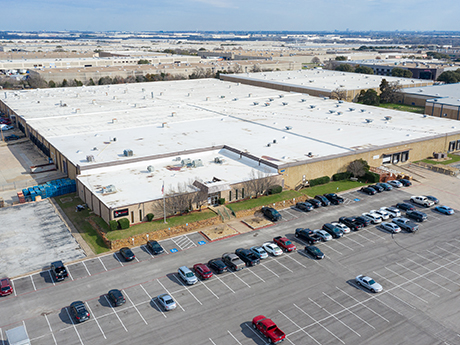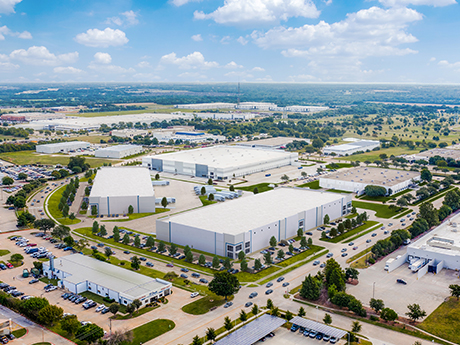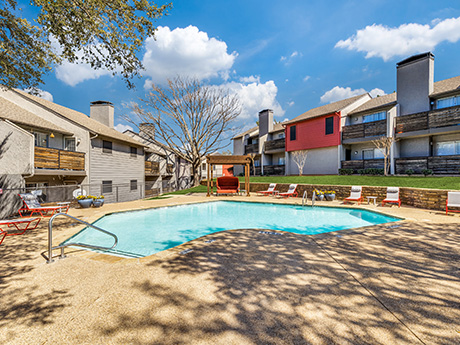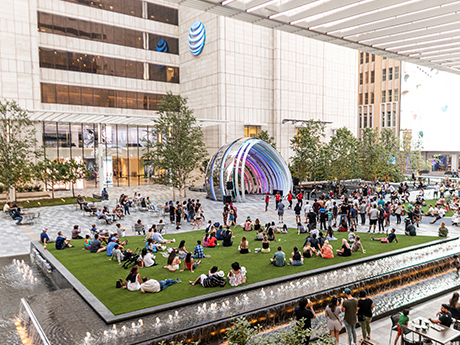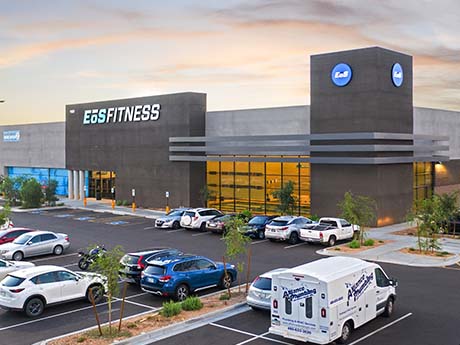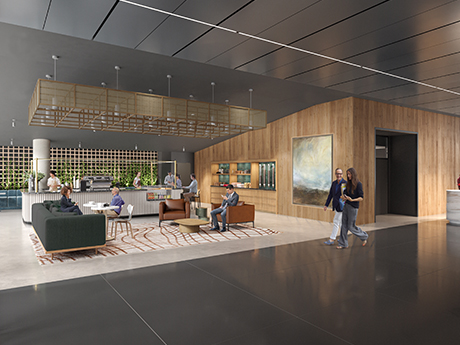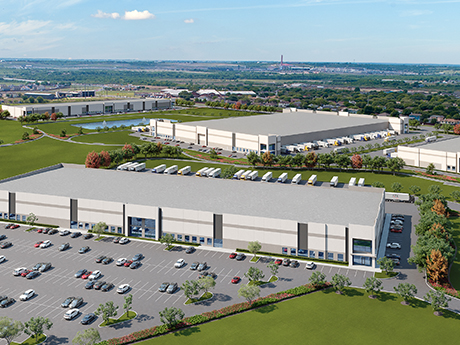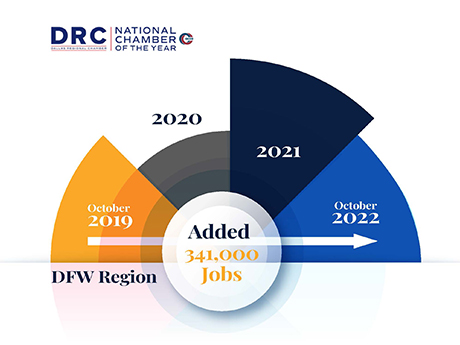By Ron Gilbreath, managing director of asset & property management, Westmount Realty Capital It’s no trade secret that global lockdowns during the pandemic had a significant and lasting impact on supply chains worldwide. EY’s 2023 poll revealed that 72 percent of senior-level supply chain executives experienced negative impacts on their businesses due to the pandemic, resulting in the emergence of a concentrated focus on supply chain visibility. The crucial point to acknowledge during this continued disruption is that these impacts are closely tied to the just-in-time (JIT) inventory management system. As a result of these challenges, businesses are actively reassessing their distribution network strategies, leading to a surge in demand for industrial warehouse space. With the necessity to maintain greater inventory levels, companies are re-evaluating their warehouse space requirements and distribution setups to mitigate the risk of future supply shortages. The lockdowns disrupted two essential elements of JIT strategy: steady production and supplier reliability. Suppliers forced to comply with government lockdowns incurred major disruptions across various business lines due to the challenge of maintaining consistent production. This is a key component of JIT delivery that relies on having materials physically present during the production process. When these materials are unavailable, …
Texas Market Reports
By Ben Wallace, SIOR, vice president, Colliers Over the past decade, “suburban industrial” buildings have become more critical than ever. A suburban industrial building can be defined as one that is located within the suburbs of a major metroplex and designed for small- to medium-size users with above-average allotments of office/showroom space to accommodate service and light distribution uses. The typical building and infrastructure designs naturally limit heavy truck traffic and achieve higher rental rates, deterring heavy distribution and manufacturing users from locating there. With macro-level shifts in how people shop for and acquire goods and services, the need for suburban industrial buildings that are located near consumers has become increasingly important. Most cities have done an excellent job of regulating and altering development standards for these assets to meet this need while being careful to avoid creating rundown industrial areas in their communities. These cities have achieved this goal by elevating development standards to feature clean concrete exterior façades as well as the screening of dock loading areas and attractive glass entrances. The reason that many of these items are important is that the vast majority of these suburban industrial developments are not appropriately zoned when developers come to …
By Taylor Williams Multifamily investment sales activity has been muted across major Texas markets during the first half of 2023, underscoring the unfortunate reality that even the most coveted asset classes are not immune to severe macroeconomic headwinds. Much like a year ago, the combined effects of stubborn inflation and corresponding interest rate hikes have wrought visibly negative changes to the world of multifamily investment sales. But in summer 2022, deals were still getting done at a decent clip; price disparities and depreciation were the most significant and obvious impediments to deal velocity. Today, buyers and sellers are more closely aligned on market realities as relates to price points, but many are simply not motivated to transact — at least in the short term. According to data from RealPage, in the first quarter of 2023, there were 337 multifamily transactions within the Dallas-Plano-Irving triangle, down from 510 in the first quarter of 2022. The greater Houston area saw 266 deals executed in the first quarter this year, a decline from 410 during that period in 2022, while the Austin market’s total number of transaction fell from 191 to 123 quarter-over-quarter. Multifamily sales prices responded differently to reduced deal volume from …
By Taylor Williams North Texas is attracting new and existing entertainment concepts at a frenetic pace as operators of these facilities seek to position themselves squarely in pathways of major growth and capitalize on any remaining pent-up demand from the pandemic. According to a 2022 report from the North Central Texas Council of Governments, the region’s population surpassed 8 million last year. In addition, more than 20 cities in North Texas — the area that includes and surrounds the Dallas-Fort Worth (DFW) metroplex — saw their populations swell by 10 percent or more on a year-over-year basis between mid-2021 and mid-2022. This growth inevitably encompasses key demographics that entertainment operators covet, including families with children and young working professionals. High-paying jobs continue to flow into DFW in the form of corporate relocations and consolidations. Developer KDC recently began construction on Wells Fargo’s 850,000-square-foot regional campus in Irving. New pieces of the PGA of America’s headquarters campus in Frisco are coming on line every quarter and sparking feverish development in surrounding neighborhoods. Global engineering consultant AECOM and construction machinery manufacturer Caterpillar are also in the process of relocating their headquarters from Los Angeles to Dallas, among others. Checking the two boxes …
By Barry Hand, principal, Gensler In a recent tour of a name-brand corporate campus, the host carefully explained to our team that his company’s policy regarding working from home (WFH) and returning to the office (RTO) remained loose as they completed a “year of learning.” This “learning” presumably involved listening to staff, observing who badges in when and where, experimenting with what works and what doesn’t and resolving the best way to get their arms around the most effective policies. This explanation has surely been given repeatedly in recent years. It appears most companies prefer to bring their people back to the office, but they also want to adopt policies that will work best for employees and customers, as well as the future of their organizations. While there are outliers that have instituted clear return-to-office directives, most firms are adopting change management strategies organized around attracting staff back to the office. They are doing this by leaning on experiences and amenities that demonstrate to employees the benefits of being present in the office. It seems the “experience” around which retail and food-and-beverage establishments are designed has now also reached into the corporate world. The Amenitized Workplace Increasing numbers of …
By Jason Baker, principal at Baker Katz When a national retail or restaurant brand acquires another prominent national name, the move might initially seem to make a great deal of sense — especially when there are clear similarities between the two brands. Ultimately, however, what makes these high-profile transactions successful may turn out to be less about brand synergy and more about market dynamics and commercial real estate leverage. Accepting that premise in turn raises some interesting questions about the role that these types of acquisitions and brand conversions might play in an increasing competitive commercial real estate landscape. Those questions are especially relevant in places like Texas, where retailers looking to expand or move into new markets may view the acquisition and conversion of struggling retail brands as a viable strategy. From fitness concepts to coffee chains, there may be opportunities retailers can leverage to find quality retail spaces in otherwise occupied marketplaces. Some of these acquisitions have already taken place. However, questions remain about how much of a role these conversions may play in Texas markets. The phenomenon is hardly a new one, but it does seem like a noteworthy trend for industry analysts, retailers and brokers alike …
By Taylor Williams Office owners have spent the last two-plus years undertaking every creative measure they can fathom — and afford — to get tenants and their employees to legitimately want to come back to their buildings. From investing in upgrades to physical amenities to hiring hospitality-minded professionals for property activation to offering personalized incentives, nothing has been out of bounds when it comes to recouping occupancy. Enough time has now passed such that owners can judge the extent to which their ideas and initiatives have worked. Of course, the goalposts for what defines success in the office sector have shifted radically during that time. Profit margins and forecasts have shrunk as 60 to 70 percent occupancy three to four days a week now starts to look pretty good, all other factors being held equal. It’s simply a different world. “We are never going back to pre-pandemic ways,” says Ami Figg, senior leasing specialist at Houston-based Hartman. “What COVID-19 has done for the office market is equivalent to what September 11 did for the travel industry. There will always be a need for traditional office space, but it’s changed forever, so it’s upon us as landlord and tenant reps to …
By Taylor Williams The current industrial development landscape in Texas is a true testament to the awesome power of demand — and of interest rate hikes. From El Paso to Houston, industrial users of all sizes and across all industries continue to demand new or expanded spaces to accommodate their ever-growing warehousing, distribution and manufacturing needs. E-commerce, nearshoring, COVID-19 — name your impetus — they’ve all contributed to a feverish pace of industrial development and absorption in recent years. According to fourth-quarter 2022 data from CBRE, Dallas-Fort Worth (DFW) saw an annual supply gain of about 36.1 million square feet in 2022 while posting positive net absorption of 36.5 million square feet. Third-party logistics users drove much of the new leasing activity, which contributed to a 4.6 percent vacancy rate at the end of the year. The market has now posted consecutive years of sub-5-percent vacancy. Fittingly, there remains more than 75 million square feet of product under construction throughout the metroplex. In Houston, developers delivered approximately 18.8 million square feet of new industrial space in 2022, per CBRE. Yet the market posted more than 30 million square feet of positive absorption over the course of last year, and the …
By Brett Merz, senior vice president, asset management, KBS Realty Advisors The demand for office properties with amenities that reflect an awareness of environmental, social and governance (ESG) principles is growing as a result of younger generations joining the workforce and investing. A recent study by CNBC Make It found that one-third of millennials in the United States place a high focus on investment products with ESG factors. This tendency naturally extends to the places where they work. In fact, 47 percent of 18- to-34-year-olds in the United Kingdom say they would look for a new role if they thought their employer was not committed to the cause. This finding demonstrates that ESG is becoming an essential part of recruitment and retention — particularly among younger workers. Since millennials and gen Zers make up the majority of today’s workforce, ESG is becoming a rising concern among office owners. In the growing markets of Dallas and Austin, businesses are now seeking office spaces that offer eco-friendly features to help attract and retain employees. As a large investor in top-tier commercial real estate, KBS has seen how these amenities can benefit office investors. This is one of the reasons we created an …
By Kent Elliott, principal, and Chase Fryhover, director, RETS Associates While December’s national jobs report painted an optimistic picture of the employment landscape, some sources have noted that workers in commercial real estate are leaving the industry. Yet although some national brokerage firms may be trimming the fat to cut costs in light of recent economic uncertainty, this trend does not seem to apply to Texas-based commercial real estate companies. In fact, according to Estateserve, with the Texas office market booming, vacancy rates dropping and rents rising, “Texas’ commercial real estate is experiencing a resurgence.” As a national executive search firm that has served the industry for more than two decades, RETS Associates has a seasoned perspective on job markets throughout the country. Here are the trends we are noticing throughout the industry in Texas and why we believe the market is poised for ongoing strength and stability. Continued In-Migration Texas is the ninth-largest economy in the world, as well as one of the leading markets in the country in job and economic growth. The Dallas-Fort Worth (DFW) area in particular, the fourth-largest MSA in the country, led the country in population growth in March 2022 and in post-pandemic job …


